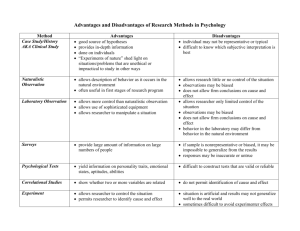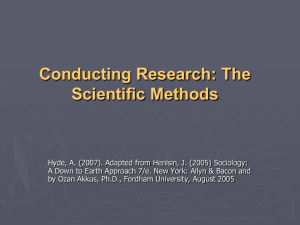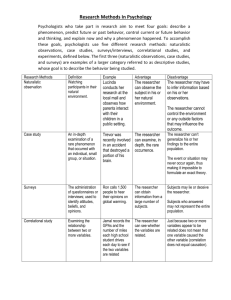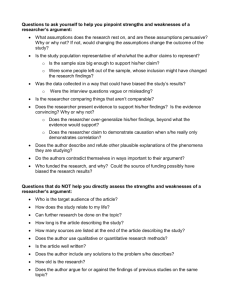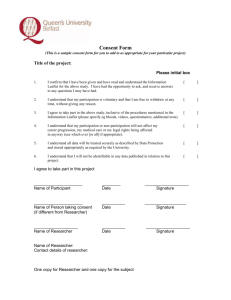Research Methods - Henry County Schools
advertisement
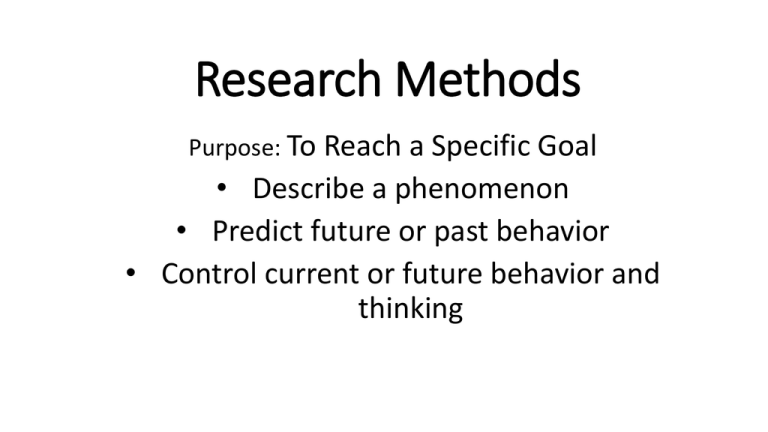
Research Methods Purpose: To Reach a Specific Goal • Describe a phenomenon • Predict future or past behavior • Control current or future behavior and thinking Definitions • Naturalistic Observation – Watching participants in their natural environment • Case Study – An in-depth examination of a rare phenomenon that occurred with an individual, small group, or situation. • Surveys – The administration of questionnaires or interviews; used to identify attitudes, beliefs, and opinions. • Correlational Study (pseudo- or quasi) Experiment – Examining the relationship between two or more variables • Experiments – Attempting to prove causation by allowing the researcher to manipulate on or more variables and measure their outcome. Categories/Goals (what are you trying to do) •Descriptive Research – To determine the basic dimensions of a phenomenon •Correlational Research - To determine how variables change together •Experimental Research – To determine whether a causal relationship exists between two variables. Example of Naturalistic •Lucinda conducts her research at the local mall and observes how parents interact with their children in a public setting. Example of Case Study •Trevor was recently involved in an accident that destroyed a portion of his brain, leading to strange behavior. Example of Survey •Ron calls 1,500 people to hear their opinions on global warming. Example of Correlational or pseudo or Quasi Experiments •Jamal records the GPAs and the number of miles each high school student drives each day to see if the two variables are related. Example of Experiments •Bailey believes that chocolate improves memory. She administers chocolate to one group but not the other. After a memory test, Bailey records the data and formulates her theory. Naturalistic • Advantages: The researcher can observe the subject in his or her natural environment • Disadvantages: the researcher cannot control the environment or any outside factors that may influence the out come • The researcher may have to infer information based on his or her observations Case Study • Advantages: The researcher can examine, in depth, the rare occurrence, which may lead to a better understanding of brain functioning. • Disadvantages: The researcher can’t generalize his or her findings to the entire population. • The event or situation may never occur again, thus making it impossible to formulate an exact theory or replicate the findings. Survey • Advantages: the researcher can obtain information relatively inexpensively from a large number of subjects. • Disadvantages: Subjects may lie or deceive the researcher. • Subjects who answered may not represent the entire population. Correlational Study • Advantage: The researcher can see whether the variables are related • Disadvantage: Just because two or more variables appear to be related does not mean that one variable caused the other variable (correlation does not equal causation). Experiments • Advantages: The researcher can prove whether one variable causes a particular outcome • Disadvantages: The researcher cannot always account for outside influences (confounding variables) that may impact or skew the overall results. It is also difficult to apply what occurs in a controlled lab setting to the real world.
